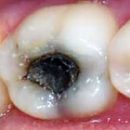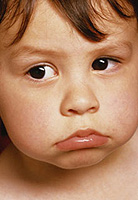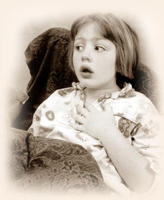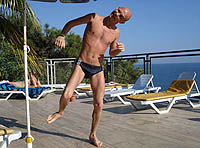What is sharp laryngitis? How laryngitis occurs in children? What is a false croup? How to treat Larygit? Answers to these questions you will find in the article.
Content
You happened to lose my voice after a strong cry or on a cold background? Unpleasant condition. And even more unpleasant it proceeds in children. Parents, at least once in his life, faced with the complication of acute laryngitis in the form of false cereals, will never forget it. People who, by the nature of their activities, are often talking to a long time, know well what chronic laryngitis is also not the most pleasant disease.
What is sharp laryngitis
Larygitis is inflammation of larynx and voice ligaments. Larygitite can be acute and chronic.
Acute laryngit. Acute laryngitis occurs most often against the background of general overcooling with the weakening of the body and the addition of infection (viruses, bacteria). The reason may also be injured, chemical and thermal burns. The predisposing factors are the dustiness of the premises, hot dry air, voice overvoltage, the presence of chronic foci of inflammation in the nasopharynk, disorders of nasal respiration.
Acute laryngitis begins against a viral infection. Initially, signs of pharyngitis (pharyngeal inflammation) appear - dry throat, alloy, dry cough. Then the voice becomes rude, hoarse, sometimes disappears at all. Voice ligaments acquire the shape of thick reddened rollers. The disease lasts about a week, but with constant violation of the voice regime and improper treatment can go into a chronic form.
Acute laryngitis in children. Acute laryngitis in young children can flow hard, since young children have less lumen of respiratory tract, which predisposes to the emergence of such a complication as a false croup. At the same time, the child appears signs of respiratory disorder, t.E. He begins to choke. Some children have a clear family predisposition, as well as a tendency to repeat diseases.
What is a false croup
Against the background of a cold illness, a moderately pronounced cough with a ring tint appears. Then an increasing shortness of breath appears with a difficult breath, the child swells the wings of the nose, become noticeable at interference gaps when breathing. The child prefers to sit in bed or stand in a vertical position. In the future, the excitement with the cry appears first, and then sharp weakness, against which the child may die.
ATTENTION: If you notice that your child has a hoarse «barking» Cough or changed voice, immediately call the doctor - it is impossible to engage in self-medication. But if the symptoms are growing and the first signs of shortness of breath appeared, then no longer waiting for their doctor, you need to call an ambulance!
What is chronic laryngitis
 Chronic inflammatory processes in the larynx are most often developing against the background of frequently repetitive and non-docked acute diseases, chronic foci of inflammation of the respiratory tract, allergic processes, as well as professional harm (chemical irritants, dust, voice overvoltage and T.e).
Chronic inflammatory processes in the larynx are most often developing against the background of frequently repetitive and non-docked acute diseases, chronic foci of inflammation of the respiratory tract, allergic processes, as well as professional harm (chemical irritants, dust, voice overvoltage and T.e).
Catarial, hypertrophic and atrophic forms of chronic laryngitis distinguish.
When catarrhal form, redness and thickening of the mucous membrane of the larynx and voice ligaments. Dryness appears, the perfense, the feeling of the foreign body in the larynx, cough, the voice acquires hoarseness.
Hypertrophic shape of chronic laryngitis may occur from catarrhal, but may develop independently. There is an arrangement of the mucous membrane of the larynx, the most pronounced in the field of voice folds. Lanes covered with viscous mucus due to impaired function of the slope mucous membrane.
In case of atrophic form of the disease, the main symptoms are dryness, witness, feeling of the foreign body in the throat, cough with difficult waste sputum. With this form of laryngitis, the larynx mucous membrane is thinning.
How to treat Larygit
Treatment of acute laryngitis is a rich alkaline drink, hot foot baths, if necessary, for the appointment of a doctor - anti-inflammatory treatment in the form of antibiotics and sulfonamide drugs. Preparations are prescribed, removing swelling of tissues (antihistamines, such as TAVEGIL). Perhaps the accession of physiotherapy procedures (inhalation). Patients are encouraged to comply with voice regime (not strain voice) and diet (eliminate sharp dishes).
Treatment of chronic laryngitis more difficult. Assigns a lining treatment, local treatment and physiotherapy procedures.
Local treatment provides for the infusion into the larynx of various drugs, as well as the lubrication of its mucous membrane.
Physiotherapy procedures are, above all, inhalation. Before it is prescribed diluting mucus and expectorant drugs and only then - aerosols of medicinal substances and vegetable oils. Prescribe physiotics, improving blood circulation and metabolic processes in the tissues of the larynx (UHF, mud appliqués and t.D.).









